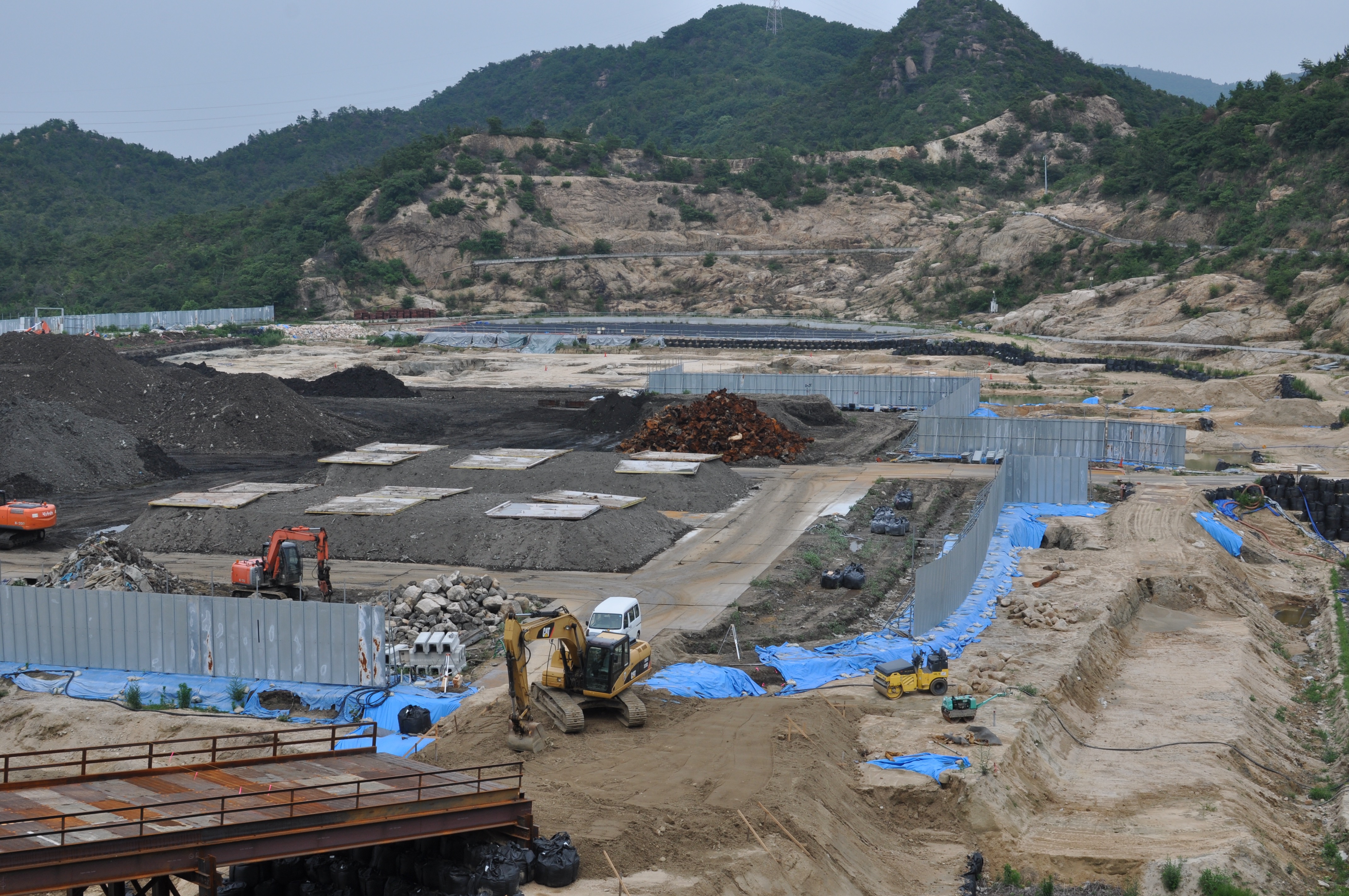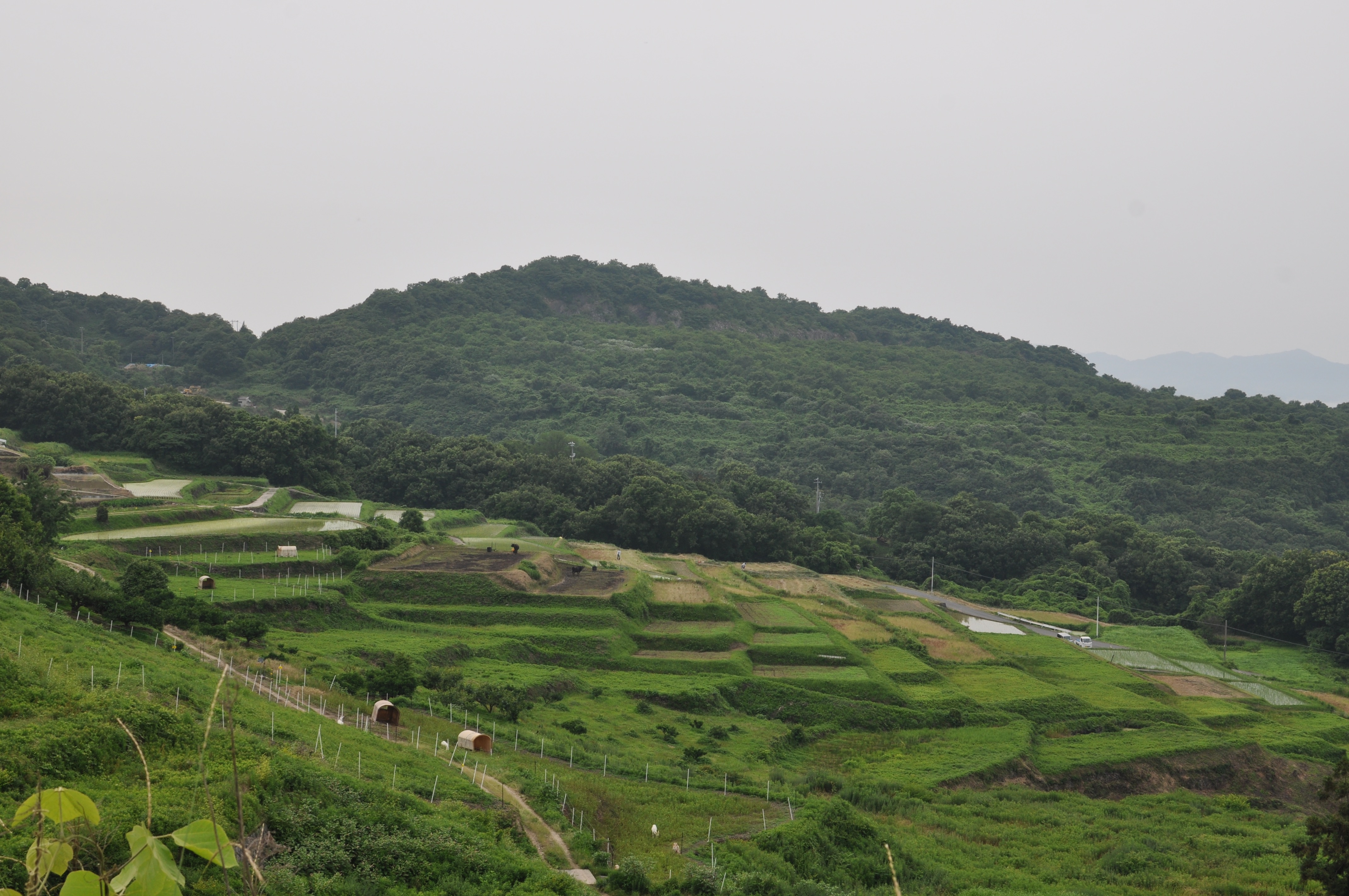Written by Hayden Zahn
Something that has stuck with me since returning home is the way in which three of the places we visited have dealt with disaster. While Onagawa and Ishinomaki are linked by the 3.11 earthquake and tsunami that struck the coast of the Tōhoku region, their responses could not be more different. Meanwhile, the island of Teshima has been dealing with the long term repercussions of industrial pollution, unrelated to the 3.11 disaster, and so lends a wholly different perspective and reaction on disaster.
The island of Teshima is an interesting case, as not only was it the dumping grounds for industrial waste, but it has since become the home to a truly amazing art installation by artist Rei Naito and architect Ryue Nishizawa. Just across the road from the museum are rice paddies and elsewhere on the island are olive trees that produce some amazing olive oil. All of this belies the huge recycling project on the Western tips of the island that is seekingto clean up the enormous amount of toxic waste that was dumped on the island beginning in the late 1970s to early ‘80s. While we were able to get a tour of the recycling plant, it seems that it has been overtaken by the popularity of the artwork. This is not to say that the disaster is any less present, however the museum and art installations have overtaken what they were built to demonstrate against. Rather now, the issue seems to be the depopulation of the islands as residents grow older and their children and grandchildren leave to look for jobs in metropolitan areas.
In the aftermath of the tsunami, Onagawa is undergoing a truly staggering reconstruction. The tsunami is responsible for the destroyed buildings, but after the rubble was cleared, excavators have since reshaped the landscape. The view out to the sea is unobstructed by any building. The stark landscape of exposed earth was unsettling. But as was explained to us, this tragedy is being used as a way to rebuild Onagawa entirely. The plan for Onagawa is to build the town around the premise of ensuring the safety of residents and visitors, and so there will be more direct line of sight with the sea. While there was some talk of erecting a memorial site, they were only briefly touched on. The entire effort seems centered around moving forward, and preparing for any future disasters that may strike the area.

Meanwhile, Ishinomaki is seeking a slightly different path, focused more on memorialization than either Oanagawa or Teshima. While the city has plans to build a memorial park, the project is not as straight forward as it first appears. Perhaps the most obvious issue is that the park is slated to be built on land that is deemed uninhabitable due to its proximity to the ocean. This same land originally contained around 1,700 households, which were destroyed when the tsunami hit the coast. While the debris and rubble has since been removed, outlines of building foundations, are still visible through the overgrowth of grass and weeds. While the park is slated to open in 2021 (10 years after the 3.11 disaster) there are still a number of issues that have to be addressed before construction on the park can actually begin. The biggest issue that still remains, even four years later, are the number of people that are still living in temporary housing. I was given the opportunity to work at the Ishinomaki Note: Youth Support Center, an organization that helps hikikomori reacclimatize to society (providing activities such as gardening, light sports, English classes, and doing data entry at other organizations like Peace Boat). Working at Peace Boat served as a strong reminder on the work that must be done beyond the construction of buildings and how easy it is for the social impact that disaster has to be forgotten (but how necessary it is to remember as well)

